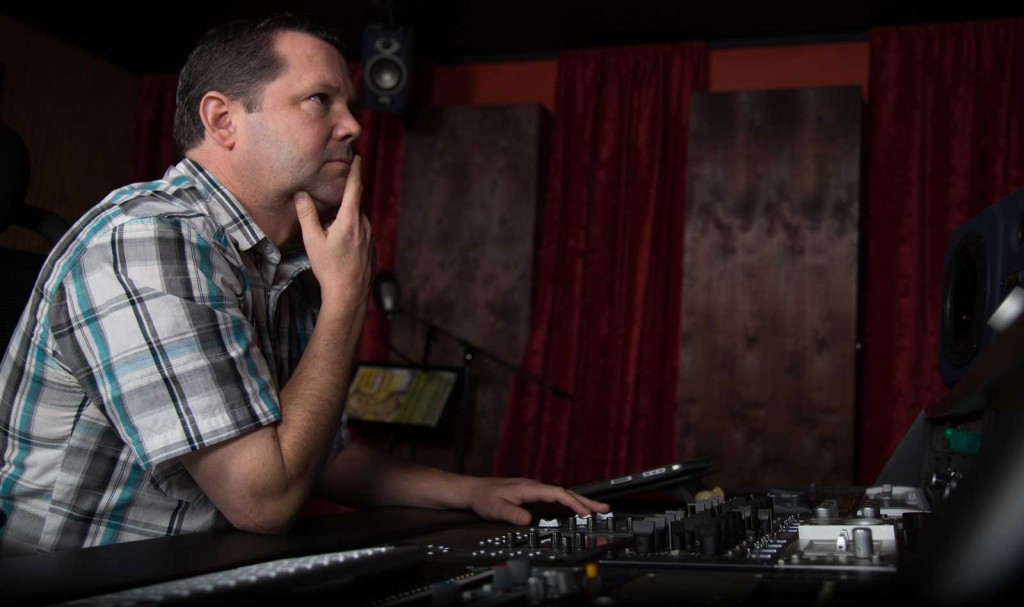At the 183rd ASA Meeting, Kenton Hummel will describe how soundscape research in day cares can improve child and provider outcomes and experiences. He and his team collaborated with experts in engineering, sensing, early child care, and health to monitor three day care centers for 48-hour periods. High noise levels and long periods of loud fluctuating sound can negatively impact children and staff by increasing the effort it takes to communicate. In contrast, a low background noise level allows for meaningful speech, which is essential for language, brain, cognitive, and social/emotional development.
Tag: 183rd Meeting of the Acoustical Society of America

How Behind-the-Scenes Sound Mixing Makes Movie Magic #ASA183
Modern movie sound mixing uses techniques like impulse responses to reproduce dialogue and other sounds. These methods are crucial to align what moviegoers see and hear and keep them engaged in the story. At the 183rd ASA meeting, Jeffrey Reed of Taproot Audio Design will demonstrate the behind-the-scenes audio engineering required to re-create the acoustics of movie sets and locations, sharing short clips of film to compare the original recording to the studio mixed product.
Helping Acoustic Concepts Resonate with Students #ASA183
“I am sitting in a room, different from the one you are in now.” With these words, Alvin Lucier begins a fascinating recording where his voice warps and becomes indistinguishable over time, solely because of how sound reflects in the room. For physics students, this audio can be used to reveal details of the surrounding room and teach important lessons about acoustic resonance. Andy Piacsek, of Central Washington University, will discuss how he employs Lucier’s project in the classroom during his talk, “Students are sitting in a room.”
Cultivating a Music Studio to Sound Like an Indoor Forest #ASA183
At the 183rd ASA Meeting, researchers will describe “The evolution of Blackbird Studio C,” a space designed to provide an accurate and immersive mixing and production environment. They wanted to create a unique, ambient anechoic space that would allow ambient sound to decay equally across different frequencies and be free from interfering reflections, making it sound like an indoor forest. So they covered the walls and ceiling with primitive root diffusers. This technology causes sound energy to diffuse and radiate in many directions.
Why Those Sounds From Your Upstairs Neighbor Are So Annoying #ASA183
At the 183rd ASA Meeting, Markus Mueller-Trapet will describe experiments designed to simulate and measure the perceived annoyance experienced from noisy neighbors in multi-unit residential buildings. He and his team provided a living room-like situation and recorded impact sounds of objects dropping and people walking. They then presented the recordings to study participants, using different playback techniques and virtual reality, and created an online survey. The team hopes to provide guidance to architects and building code developers.
Supersonic Travel, Without the Sonic Boom #ASA183
At the 183rd ASA Meeting, Gautam Shah will discuss plans to test a supersonic aircraft with technology to alter how supersonic shock waves behave and reduce sonic booms. NASA will conduct a series of flights over various communities across the U.S., and Shah and his team will measure the sound of the aircraft and conduct public surveys to understand the public response to different noise levels. By providing this information to regulatory agencies, the group hopes to inform an overland supersonic sound standard.
Listen to the Toilet — It Could Detect Disease #ASA183
Researchers describe how a noninvasive microphone sensor could identify bowel diseases without collecting any identifiable information. They tested the technique on audio data from online sources, transforming each audio sample of an excretion event into a spectrogram, which essentially captures the sound in an image. The images were fed to a machine learning algorithm that learned to classify each event based on its features. The algorithm’s performance was tested against data with and without background noises.

Machine Learning Diagnoses Pneumonia by Listening to Coughs #ASA183
Researchers have developed a machine learning algorithm to identify cough sounds and determine whether the subject is suffering from pneumonia. Because every room and recording device is different, they augmented their recordings with room impulse responses, which measure how the acoustics of a space react to different sound frequencies. By combining this data with the recorded cough sounds, the algorithm can work in any environment.

Can a Playlist be Your Therapist? Balancing Emotions Through Music #ASA183
Researchers present an app that creates playlists to help listeners care for their emotions through music. The app could be used by people who may not want to receive counseling or treatment because of feelings of shame, inadequacy, or distrust and aims to leave them more positive and focused than they were when they began. Users take three self-led questionnaires to measure their emotional status and the app then creates a customized playlist of songs using one of three strategies: consoling, relaxing, or uplifting.
Shhhh … Speaking More Quietly in Restaurants Means Everyone Can Be Heard #ASA183
In a crowded restaurant, the sounds of conversations bounce off walls, creating background noise. Each individual wants to be heard, so they end up talking a little bit louder, which increases the overall din. Eventually – barring an interruption – the system gets loud enough to reach the limit of the human voice. Braxton Boren will discuss this cycle, called the Lombard effect, and how it can be disrupted in his presentation, “A game theory model of the Lombard effect in public spaces.”